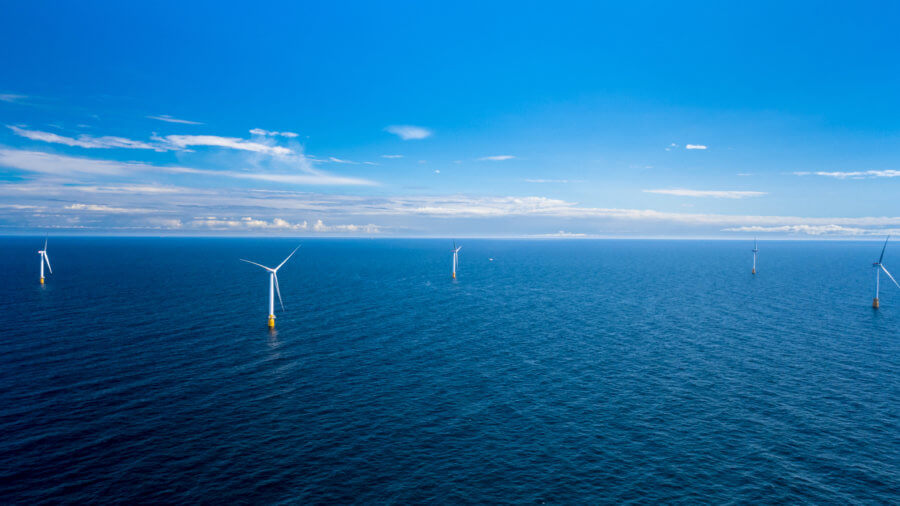Wind turbines are a valuable source of renewable energy, but it can be hard to find a good place to put them. They need to be close to a populated area so that transporting the power they generate isn’t too expensive—but they suffer from some serious “not in my backyard” syndrome when it comes to being too close to populated areas; they’re noisy and, though a field of them looks scenic from far away, up close they’re sort of huge and ugly.
So why not put them out in the ocean? It’s not a new idea—as of the end of 2016 there were 14,384 MW of installed offshore wind power capacity, the bulk of it in Europe—but what is new is having the turbines float instead of being anchored to the sea floor.
Last week saw the launch of the world’s first floating offshore wind farm. Located in the North Sea off the coast of Peterhead, Scotland, the wind farm consists of five enormous horizontal-axis turbines that together can generate 30 megawatts of electricity. That’s enough to power about 20,000 homes.
The wind farm is called Hywind, and it’s been in the making for over 15 years, spearheaded by Norwegian energy firm Statoil. Key facts about the turbines and their location include:
- The turbines are positioned in water up to 129 meters (423 feet) deep (anchored turbines are usually placed at maximum depths of 50m (164 feet)).
- Each turbine is 253 meters tall in total (around 830 feet), about a third of that under water and the rest towering over the ocean’s surface, and weighs 11,500 tons.
- The turbines are tethered to the seabed by chains that weigh 1,200 tons.
- Each blade is 75 meters (246 feet), far longer than the wingspan of a Boeing 747.
- The blades use special software to keep the turbines upright by adjusting their motions based on wind, waves, and currents.
The average wind speed in this area of the North Sea is around 10 meters per second, or 22 miles per hour—so we’re not talking hurricane-like gales here, but for comparison’s sake: USA Today named Dodge City, Kansas the windiest city in the US, with an average wind speed of 13.9 mph.
According to the American Geosciences Institute, small increases in wind speed cause big increases in energy production: a turbine in 15 mph wind can generate double the energy a turbine in 12 mph wind can. Also, winds are more constant offshore than on land, making for a more reliable power supply.
According to the Bureau of Ocean Energy Management, about half the US population lives in coastal areas, meaning offshore wind could be a practical solution for our future energy needs. This would be good for the planet, too; Project Drawdown’s research on offshore wind found that increasing it from 0.1 percent of world electricity use to 4 percent by 2050 could avoid 14.1 gigatons of CO2 emissions.
It’s not yet known, though, how plopping these gigantic pieces of equipment in the ocean will affect marine life. People in opposition to offshore wind projects have voiced concerned about the turbines’ spinning blades killing thousands of birds.
In short, Hywind’s floating turbines are an incredible feat of both technology and engineering. But as the world’s energy needs continue to grow, we’ll likely find ourselves weighing the costs and benefits of scaling up these projects.
Image Credit: Øyvind Gravås / Woldcam / Statoil
